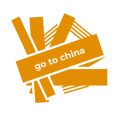
What It Is: Tui na (pronounced “twee-nah”) is the traditional Chinese massage. Unlike a gentle Swedish spa massage, tui na is a more vigorous, therapeutic massage therapy that involves pressing, kneading, stretching, and percussion on the body. The name literally means “push and grasp” – hinting at the technique involved. It can be done for general relaxation, but many people use tui na to address specific aches and pains or even chronic health issues.
Underlying Idea: Tui na is one of the pillars of traditional Chinese medicine, along with acupuncture and herbal medicine. It works along the body’s network of meridians (energy channels) and acupuncture points. The practitioner’s goal is to balance the flow of qi (vital energy) by removing blockages and correcting imbalances. In practical terms, that means a tui na masseuse will target pressure points related to your complaint (say, a stiff neck or sluggish digestion) and stimulate them. This therapy goes beyond muscles and bones – it’s believed to work on a deeper energetic level than Western massage. Don’t be surprised if your therapist talks about “dampness” or “stagnant qi” in your body; these are TCM concepts explaining why you might feel pain or fatigue.
The Experience: When you go for tui na, you typically remain fully clothed or wear loose pajamas provided by the spa. You’ll lie on a Chinese massage table or a special bed. The practitioner will ask if you have any specific areas that need attention. A session can last anywhere from 30 minutes to an hour. Expect a mix of techniques: they may start with broad presses and glides along your back, then dig into knots with firm thumb pressure. They might do quick percussive taps with cupped hands or fists, and use stretching movements (for example, gently pulling your arm to rotate your shoulder). If you have tension, don’t be surprised if they find spots that make you wince – tui na can be intense! One traveler described it as “not a relaxing spa massage, but like someone trying to beat the stress out of you” – in a therapeutic way. Communication is key: the masseuse may ask “疼不疼?” (téng bù téng? – “Does it hurt?”). Feel free to say if you need lighter pressure (“轻一点” qīng yì diǎn).
How It Feels: During the Chinese massage, you’ll feel a lot of deep pressure – thumbs digging into that spot between your shoulder blades, knuckles tracing firmly along the sides of your spine. At times it can be intensely satisfying, and at times it might “hurt so good.” Many Chinese believe the soreness is part of the healing: “no pain, no gain” in releasing those blocked meridians. Some moments may make you gasp or brace yourself (like when a therapist uses an elbow on a tight lower back muscle). But often, immediately after they release a pressure point, you feel a warm relief spreading in that area. By the end of a session, you might feel a bit sore or tender – like after a strong workout – but also looser and lighter. It’s common to feel your range of motion improved (your neck turns easier, your back feels flexible) and a rush of circulation. Don’t be alarmed if you have mild bruising or redness at some spots; that can happen with very firm tui na and usually fades in a day or two.
Benefits: People seek out tui na both for relaxation and remedial purposes. Possible benefits include relieving muscle tension and joint pain, improving blood flow, and even helping with headaches or stress-related insomnia. In TCM thinking, tui na helps harmonize yin and yang in the body by ensuring qi flows freely, which can boost overall wellness. After a session, aside from the physical relief, you might find yourself incredibly relaxed – sometimes tui na triggers an emotional release too, leaving you calm and almost meditative. It’s also a fascinating window into Chinese culture’s approach to health: the therapist might share TCM tips like “avoid cold drinks tonight” if they felt your body had “coldness”. It’s a more holistic vibe than a standard massage.
Where to Try: Pretty much any Chinese city will have massage centers offering tui na (推拿) or simply “Chinese massage” (中式按摩). For authenticity and value, you can look for places known as 盲人按摩 (mángrén ànmó) – blind massage clinics. There is a tradition of visually impaired massage therapists in China who are highly skilled at tui na. Trying a blind massage center (they’re common in many cities) can be a unique and rewarding experience – and don’t worry, many have someone who speaks basic English or they’ll communicate through gestures. In Beijing and Shanghai, local massage parlors in residential neighborhoods often provide excellent tui na at low cost (around ¥100 for an hour is common). For a more upscale environment, spas like Dragonfly (a famous chain in China) offer tui na with English-speaking staff. Wherever you go, make sure it’s a legitimate massage center – avoid any sketchy “massage” places advertising more than just massage. When done properly, tui na will leave you feeling like a new person, ready to continue your travels with refreshed energy.
